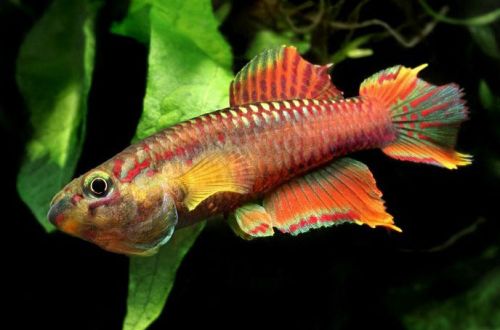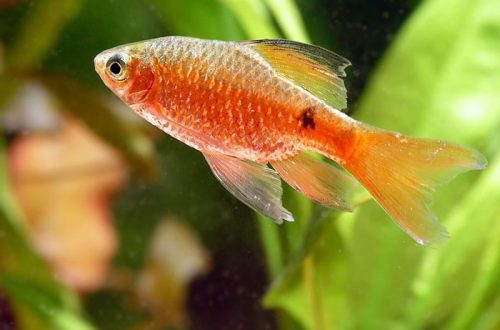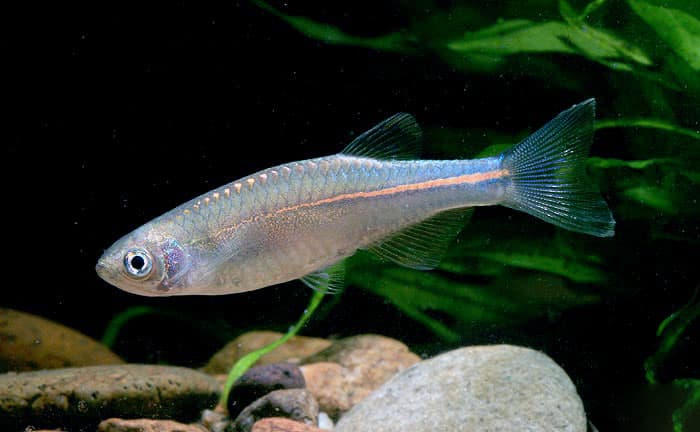
Pearl Danio
The mother-of-pearl or pearl zebrafish, scientific name Danio albolineatus, belongs to the Cyprinidae family. Beautiful unpretentious schooling fish. It is considered easy to keep and breed in home aquariums.

Contents
Habitat
The homeland of the species is the Malay Peninsula in Southeast Asia. Fish are found on the territory of modern Myanmar, Thailand, Laos, Cambodia, Vietnam, Peninsular Malaysia and the Indonesian island of Sumatra. They live in the basins of large river systems such as the Mekong, Chao Phraya, Maeklong, Irrawaddy and Salween, as well as in countless small tributaries. The fish prefer regions with clear, oxygen-rich water and rocky substrates.
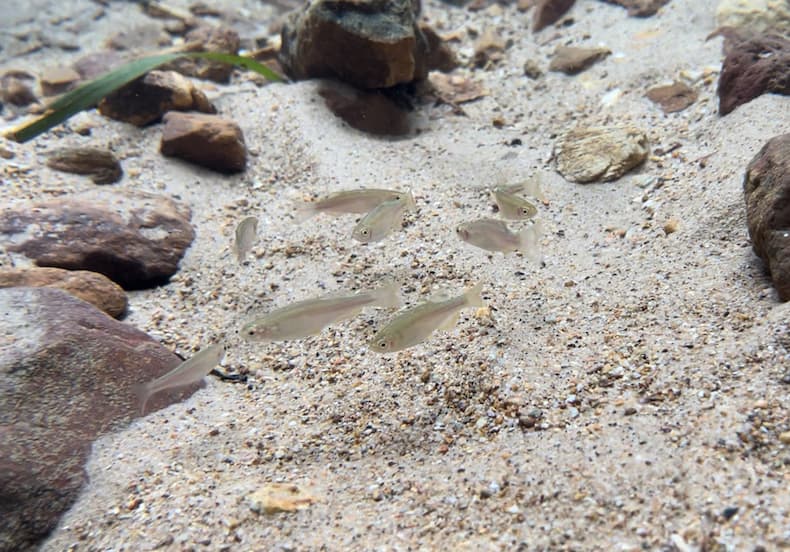
Brief information:
- The volume of the aquarium – from 80 liters.
- Temperature – 16-25°C
- Value pH — 6.0–8.0
- Water hardness – soft to hard (2-19 GH)
- Substrate type — stony
- Lighting – moderate
- Brackish water – no
- Water movement – moderate
- The size of the fish is about 5,5 cm.
- Food – any food
- Temperament – peaceful, active
- Keeping in a flock of 8-10 individuals
Description
In nature, there are several color forms depending on the region of origin. However, the sale is mainly represented by fish that were bred in commercial nurseries in Asia and Eastern Europe. The nurseries supply the most popular hybrid varieties – the result of mixing several geographical color forms.
Mother-of-pearl Danio, closest to its wild relatives, has a light silvery body color with a mother-of-pearl tint with various colors of the rainbow spectrum. On the back of the tail part of the body, blue or blue shades predominate. A bright orange-red stripe runs along the body to the very tail.
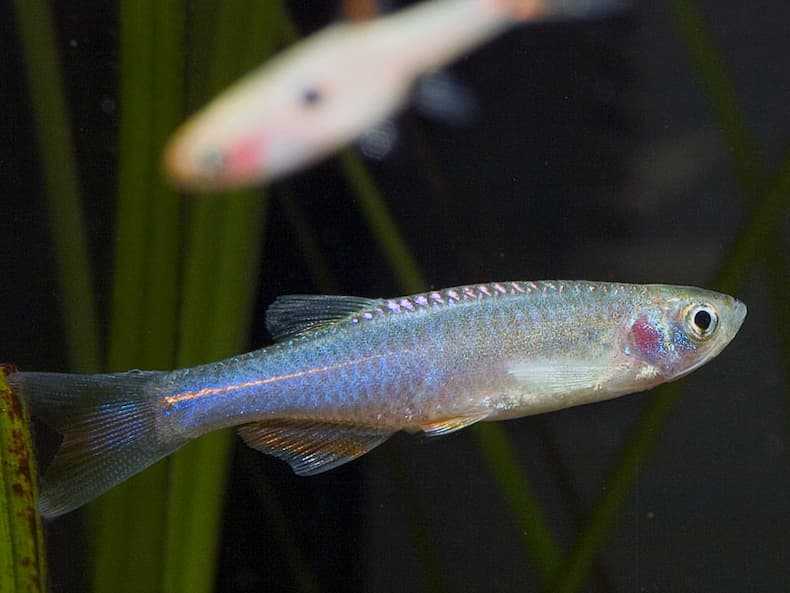
Selective Pearl Danio has a slightly different color. The dominant color is blue, which in some cases covers the entire body, including overlapping a contrasting orange-red stripe.
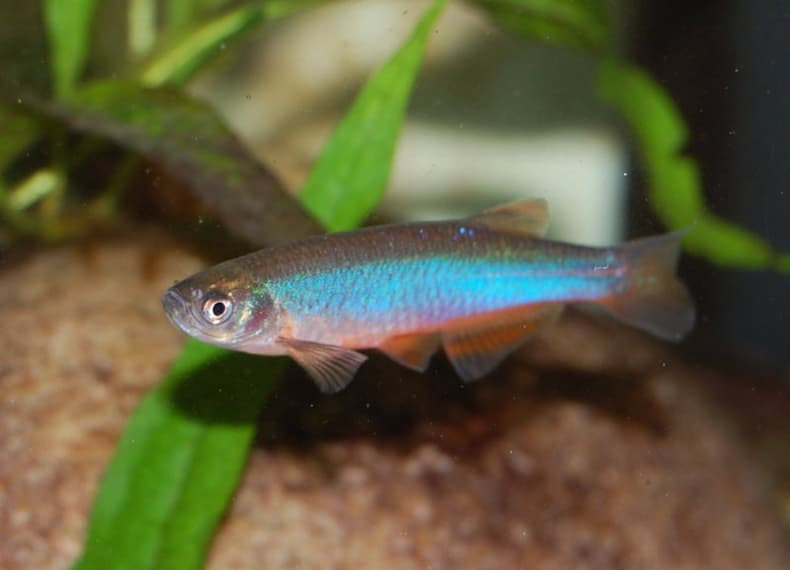
Another common color form is fish with a light blue color and a silvery belly. Two narrow orange lines run along the body. This species is found in the wild.
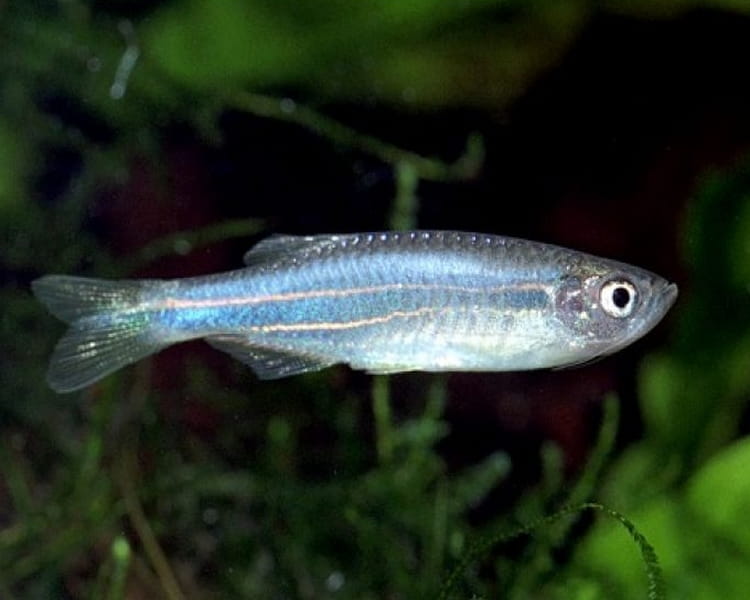
Thus, despite the name “Pearl” or “Pearl”, this species can have a wide variety of colors, and most often with a predominance of blue.
Adult fish reach a length of about 5 cm. Females look larger and less brightly colored. Males have the most intense body coloration.
Food
Undemanding to food, they accept all types of dry, frozen and live food. The diet directly affects the color of the fish, so it is advisable to combine different types of products. For example, combine flakes and granules with bloodworms, daphnia, so that the Pearl Danio continues to delight you with its colors.
Maintenance and care, arrangement of the aquarium
Two main features of the behavior of the fish determine the design of the aquarium – this is high activity and the desire to stay in the upper layers of the water. It is necessary to provide free space for swimming and prevent excessive overgrowth of the aquarium. Tall plants should be placed along the tank wall and avoid dense clusters of floating plants. The soil is stony of small pebbles with stones of variable size. As an additional decor, several natural snags, branches or tree roots can be placed at the bottom.
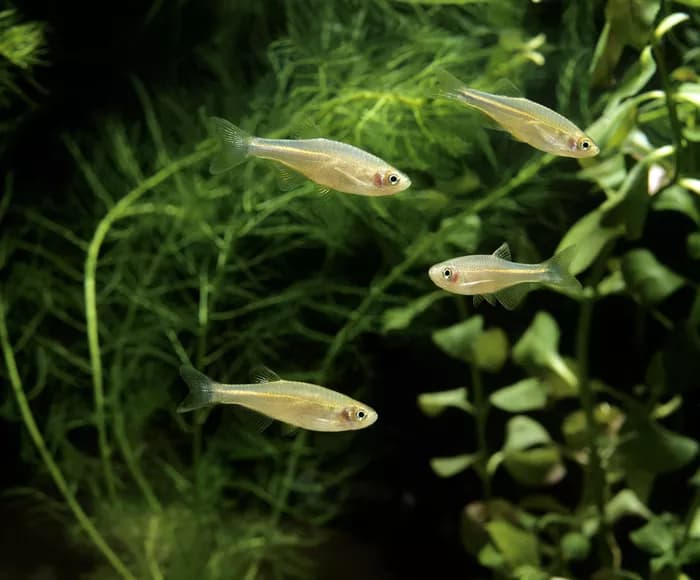
When choosing equipment, focus on the filtration system. It is recommended to use a high performance internal filter. It not only purifies the water, but also creates an internal flow. The movement of the water helps keep the zebrafish in good shape as it mimics natural river conditions. Other minimum equipment required includes an aerator, heater, and lighting system.
Water parameters have a wide allowable range of values, so there are usually no difficulties in the process of water treatment.
Aquarium maintenance comes down to a weekly replacement of part of the water with fresh water, which is combined with cleaning the soil with a siphon from accumulated organic waste.
Behavior and Compatibility
A very peaceful and active species that must be kept in a flock of 8 individuals. In such a quantity, the fish feel safe and show their best color. First of all, this applies to males that compete with each other for the attention of females.
Given the friendly disposition and the absence of strict restrictions on the conditions of detention, the Pearl Danio can successfully coexist with a large number of other popular species similar to it in temperament and size.
Breeding / reproduction
Mother-of-pearl Danio belongs to spawning species, females scatter eggs in the water column, and males at this moment fertilize it. Parental instincts are poorly developed. Immediately after the end of spawning, the fish can eat their own caviar, and later the fry that have appeared.
Breeding is recommended to be carried out in a separate tank – a spawning aquarium, in order to protect offspring from adult fish. The design is simple, the main attention is paid to the ground. It should consist of particles of a sufficiently large size, which are not tightly adjacent to each other, forming voids. For example, pebbles or decorative glass beads are a good choice. When the eggs sink to the bottom, a significant part of them fall into these voids and thus become inaccessible to adult fish. A similar effect is also achieved when using a fine mesh, which is fixed at the bottom.
Another way to ensure the safety of the eggs is to use low-growing small-leaved plants or mosses, such as Riccia and Javanese moss, which are placed on most of the surface of the substrate (in this case, the soil can be any). Dense thickets of plants can provide reliable shelter for eggs no worse than special soil.
The size of the spawning aquarium is usually 20-30 liters. The set of equipment consists of a heater and a simple airlift filter with a sponge as the filter material. Such a filter minimizes the risk of accidental suction of eggs and fry. Spawning occurs in dim light, so at first there is no need for a light source.
More about breeding Danio
The impetus for the beginning of the mating season is the establishment of water temperature in the region of the upper allowable mark of 24-25 ° C at a neutral pH value, as well as the inclusion in the daily diet of food rich in protein – bloodworms, daphnia, brine shrimp in live or frozen form.
After some time, the females become noticeably rounder, and the males will acquire a brighter color and begin to actively show signs of attention to their chosen ones. At this point, you should prepare a separate tank and fill it with water from a common aquarium. Then several females and the most colorful males are transplanted into it.
To initiate spawning, it is necessary to add a small portion of cool water every few hours and thereby gradually lower the temperature to about 20 ° C. If you carry out this procedure in the evening, then in the morning the fish may have time to spawn. The easiest way to determine the end of spawning is by females, they will become more slender.
Adult fish are returned back. The fry will appear in 24-36 hours, and a day later they begin to swim freely. Feed with specialized feed in the form of a suspension or powder. Live brine shrimp nauplii are a good choice.
How to care for caviar and fry Danio
Fish diseases
A balanced diet and suitable housing conditions are the best guarantee against the occurrence of diseases in freshwater fish. If symptoms of a disease appear (discoloration, behavior), the first thing to do is to check the condition and quality of the water, if necessary, return all values to normal, and only then start treatment. Read more about symptoms and treatments in the Aquarium Fish Diseases section.
FishBase Scientific Data Source




